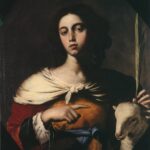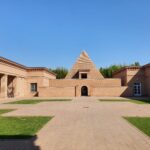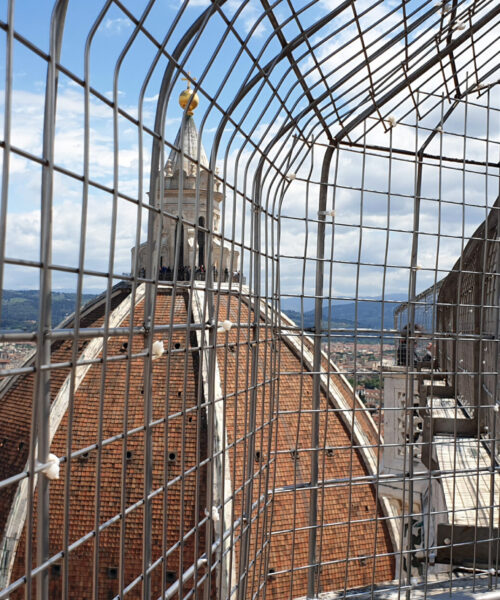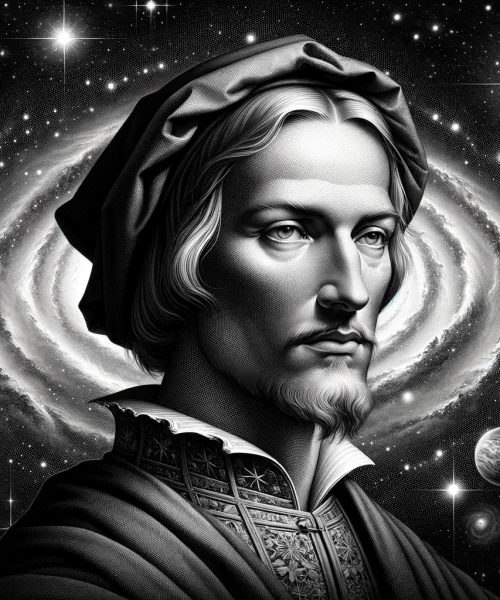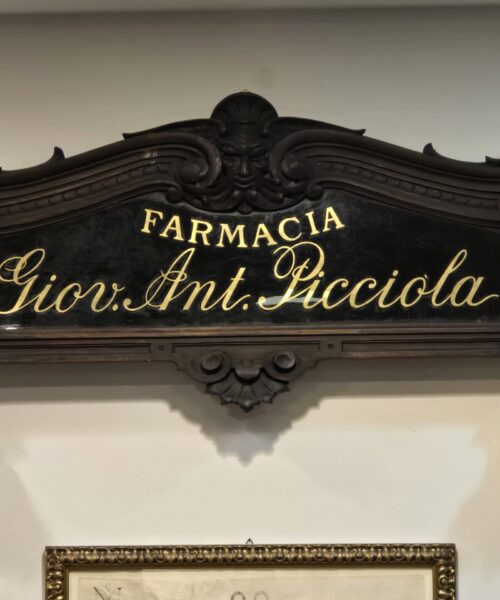Upon crossing the threshold of the Basilica of Saint Anthony in Padua, one finds themselves immersed in a world of sacred art, history, and spirituality. Commonly known as the Basilica of the Saint, the building is a true architectural gem, an essential visit for anyone in the city. Inside, dozens of artworks can be counted, each with its unique charm, but there is one monument that always strikes me particularly.
It is the funerary monument, the Monumento Funebre ai De Marchetti. This work, which harmoniously combines artistic beauty with a call to deep reflections on human existence, fascinates me every time I see it. It is not just the mastery with which it was created that captures my gaze, but also the emotions it stirs when reading the inscription engraved on the tombstone.
Crafted in 1690 by the sculptor Giovanni Comini, this polychrome marble monument stands out for its typically Baroque style. The depicted scene seems to draw inspiration from Gian Lorenzo Bernini’s “Triumph of Death,” another masterpiece of Baroque art.
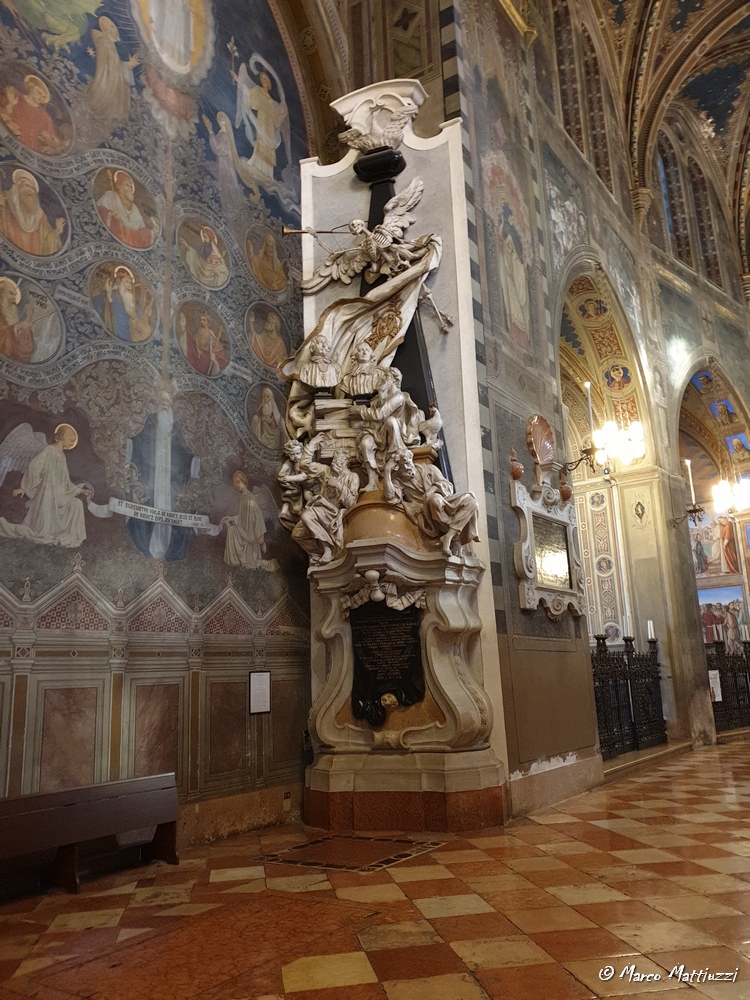
At the center of the monument stands an image of a flying skeleton with a trumpet in its mouth – a clear “memento mori” reminding us of our mortality. This figure, though it may seem macabre, is represented with such mastery that it manages to attract the observer and stimulate their reflection on the transience of life.
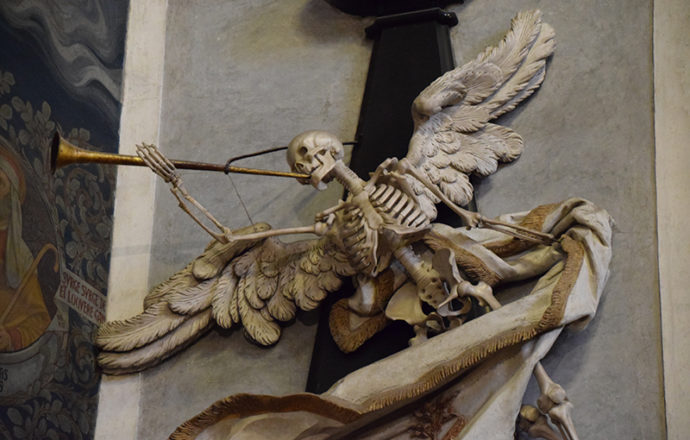
But beyond the centrality of the skeleton figure, the monument is enriched with additional symbols that add layers of meaning to the work. In particular, two animal figures stand out: a rooster and a phoenix.
The rooster, in the context of art and symbolism, is known for announcing the arrival of the day and the end of darkness. In Cesare Ripa’s Iconology, it is associated with diligence, vigilance, and importantly for the De Marchettis – both doctors – with medicine. Its morning call thus becomes a symbol of the vigilance a good doctor must have, always ready to intervene.
Alongside the rooster is the presence of a phoenix, a well-known symbol of resurrection and rebirth. This powerful image adds an element of hope and continuity in the cycle of life and death, a nod to the power of life that always renews itself.
Together, the Monumento Funebre ai De Marchetti becomes a fascinating composition of symbols and allegories. The figures of books, symbols of knowledge and learning, underscore the importance of science and study. This complexity of elements comes together to form a vivid portrait not only of the deceased but also of their era and their passions.
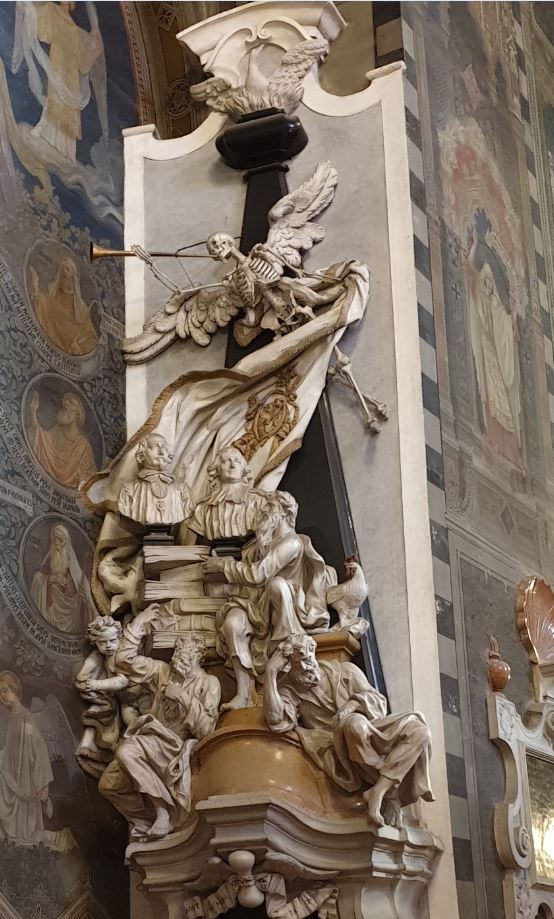
The De Marchetti funerary monument is a place of deep reflection and enduring memory. At the center of the monument lies the tombstone with the text of the funeral eulogy to the life of the two surgeons, written by Death itself. This text, rich in pathos and emotional resonance, invites the reader to contemplate mortality and the impermanence of life.
Above the tombstone is a significant and meaningful symbol: the winged hourglass. The winged hourglass represents the relentless passage of time: the sand inevitably flowing from the upper compartment to the lower is a reminder of our mortality, a warning that all that is born must one day return to the earth.
The wings adorning the hourglass further amplify this message. Wings, in many cultural and religious contexts, symbolize flight, speed, transience. In this context, the wings on the symbol of the hourglass reinforce the idea of “tempus fugit,” of time that escapes unstoppably. It’s a powerful reminder of the ephemeral nature of human life and the importance of valuing every moment we are given.
The symbolism of the winged hourglass, therefore, fits perfectly into the atmosphere of reflection on life and death that pervades the entire funerary monument. It is a constant reminder of our mortality, an invitation to contemplate the ephemeral nature of life and the importance of living it with full awareness and gratitude.
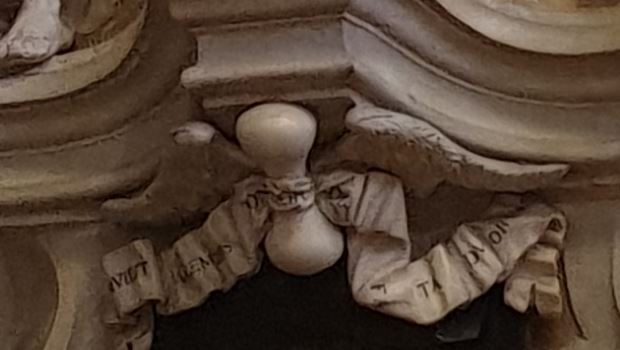
Fortune equally divides the glory between the two surgeons.
[Antonio De Marchetti, for whom the monument is dedicated, invites Death to weave the eulogy of his deceased father and brother]
Come now, Death, lay down the scythe, take up the pen, and recount the lives cut short in the prime of years, which you are to compensate in the Age of the most worthy.
[then Death accepts this task, yet concludes with a eulogy to herself]
I affirm and testify that in this tomb are contained the mortal remains of the Knight of Saint Mark, Pietro, and Domenico De Marchetti. Except for these mortal remains, there is nothing mortal about them: in the semicircle, where they taught surgery on corpses, from the most celebrated chairs of surgery and medicine, in desperate cases of illness, in the publication of books, monuments of science, the city, the homeland, the palaces of princes, the whole universe never considered them to be mortal.
But I myself, and I am ashamed to confess it, but the love of the surviving Antonio for his father and brother, a love that will remain forever, compels me to admit that I often marveled that so much power over me was granted to the Marchettis.
Who, after what I have been forced to confess, will dare to say that Death is false?
I, Death, have not yet learned to flatter people, neither with the scythe nor with writings.
In the year of the Lord 1690
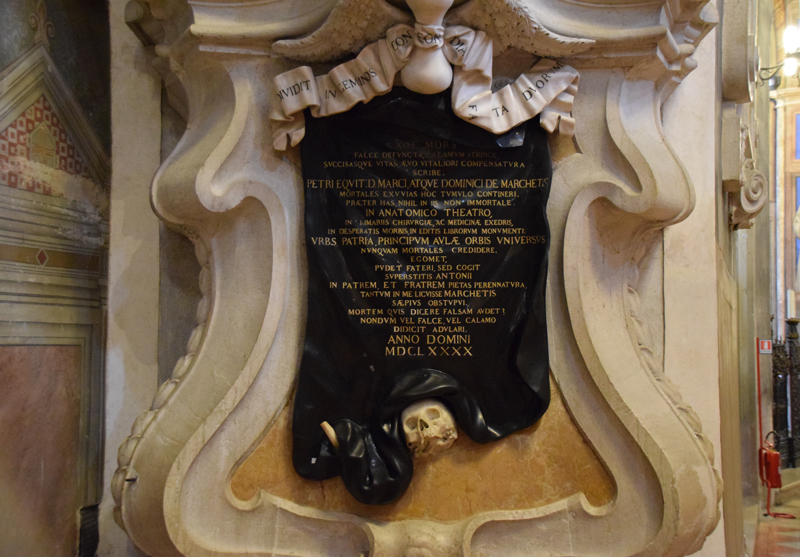
The Basilica of Saint Anthony is a place that contains an infinity of treasures, stories, and meanings. The Monumento Funebre ai De Marchetti is one of these: an artistic and symbolic jewel that deserves to be discovered and appreciated in all its facets. The next time you find yourself in Padua, make a stop at the Basilica and take the time to observe this monument: you will be fascinated.




